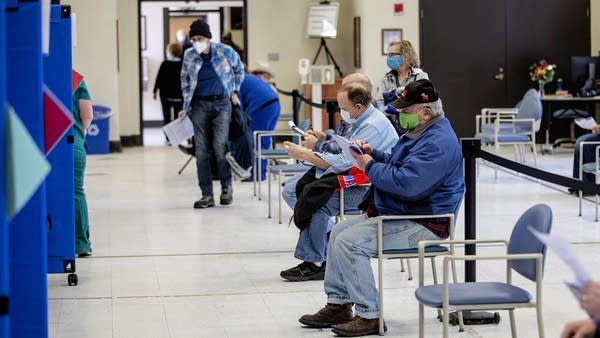So you’re vaccinated — now what?

Veterans fill out forms while waiting in line to receive their COVID-19 vaccination on Feb. 17 at the VA Medical Center in St. Cloud, Minn.
Paul Middlestaedt for MPR News file
Go Deeper.
Create an account or log in to save stories.
Like this?
Thanks for liking this story! We have added it to a list of your favorite stories.


